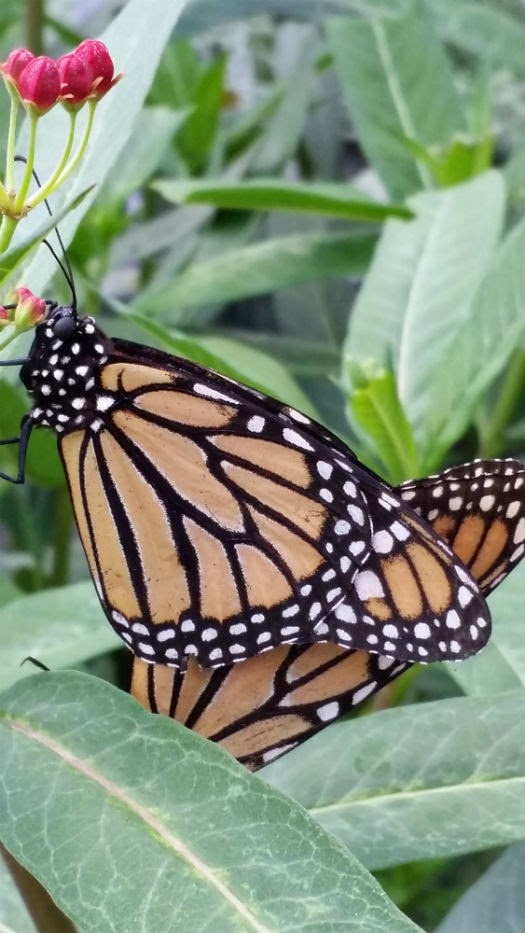I work in a large garden center in Cape Coral, Florida. With
the large abundance of plants and a very respectful staff, there has been opportunity for a successful butterfly population. The first to arrive this
past June were monarch butterflies.
Two Monarchs Mating on Milkweed
 |
|
© Snyder 2014
|
Butterflies have four life stages: egg, larva (caterpillar),
pupa (chrysalis) and adult. All butterflies have a host plant where they lay
their eggs. This monarch lays her eggs on milkweed. You
can see the small white egg at the tip of her abdomen, curved toward the plant.
 |
|
© Snyder 2014
|
The host plant is essential to nourishing the young larva or
caterpillar. Once they have finished feeding, about two weeks, the monarch
larva attaches to a different plant or object for the next stage, pupa.
 |
|
© Snyder 2014
|
The larva turns into a pupa where it begins its
metamorphosis. In this amazing stage the mushy caterpillar encases itself with
a hard pupa or cocoon for about 10 days. The initial pupa is green and darkens
as the metamorphosis takes place inside it.
 |
|
© Snyder 2014
|
Monarchs are known for their migration from Mexico and
Southern California to Canada and back, where it takes four
generations of the monarch butterfly to make the full trip.
 |
|
© Snyder 2014
|
The butterfly emerges from the pupa for the final stage, adult. These two monarchs
emerged from two cocoons next to each other.
Here in Florida, the abundance of host plants and food sources
create a habitat for the monarch to thrive year round.
Gulf Fritillary
The next butterflies to take residence in the garden center
were the beautiful gulf fritillary. This butterfly’s habitat ranges from
Argentina, Central America, Mexico, Southern U.S and the Caribbean. Its common
name derives from its migration over the Gulf of Mexico.
Two Mating Gulf Fritillary Butterflies
One host plant for the gulf fritillary larva is the purple
passionflower vine.
The gulf fritillary lays their small yellow eggs on the
vine.
The larva eats away at the passion vine. The bright orange
color and black spikes warn predators of its toxicity.
Like the monarch, the gulf fritillary hangs upside down and sheds its skin revealing a pinkish body that hardens into a leaf-like
form.
Gulf fritillaries inhabit meadows, gardens and open fields.
Some of their favorite nectar sources include: drummond phlox, lantana, tall
verbena and pentas.
Some of the butterfly nectar plants we carry in the garden
center, at this time of year, include:
Butterfly Bush
Purple Coneflower
Pentas
Lantana
Porterweed
Next time we’ll explore two other residence, the cloudless
sulphur and giant swallowtail butterflies.




































